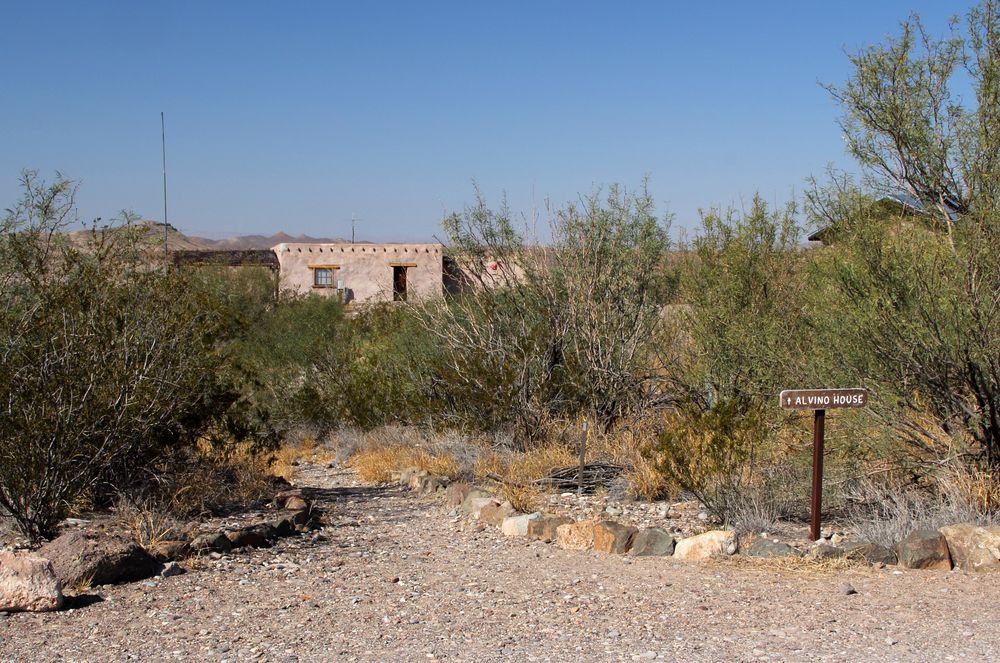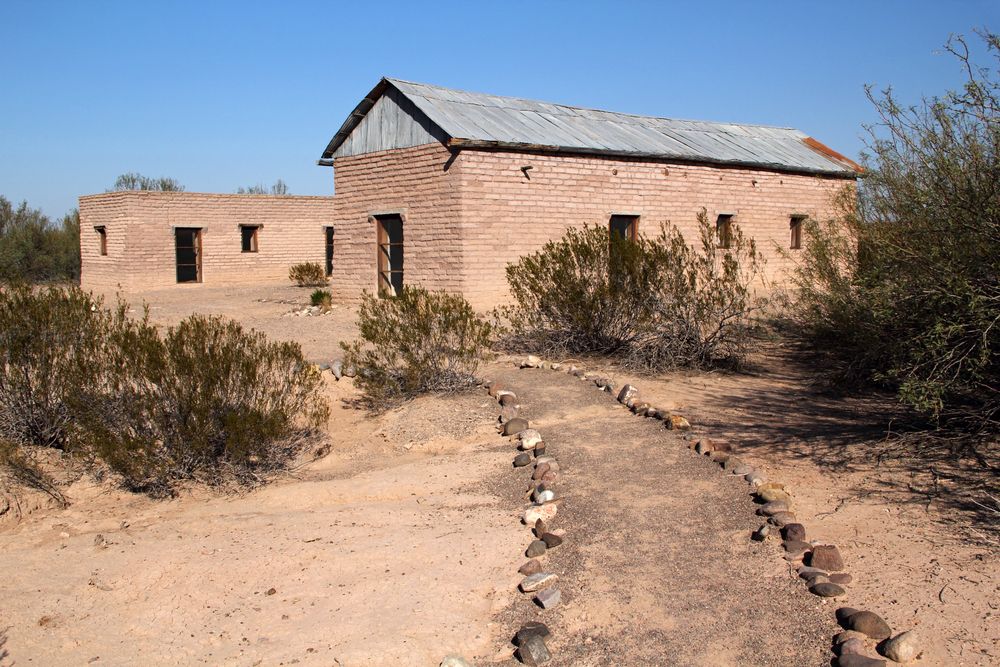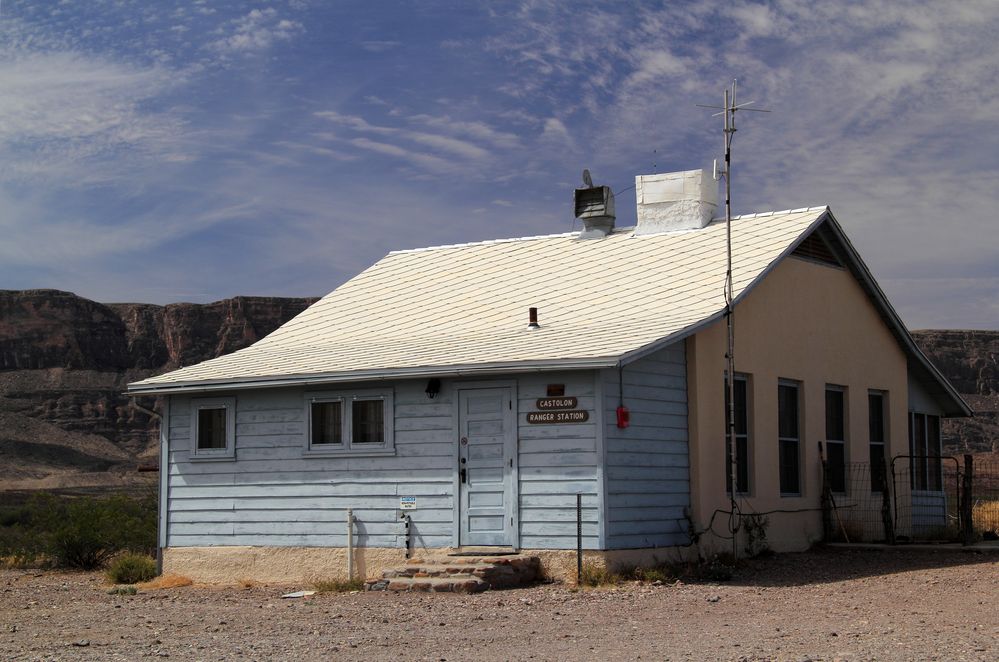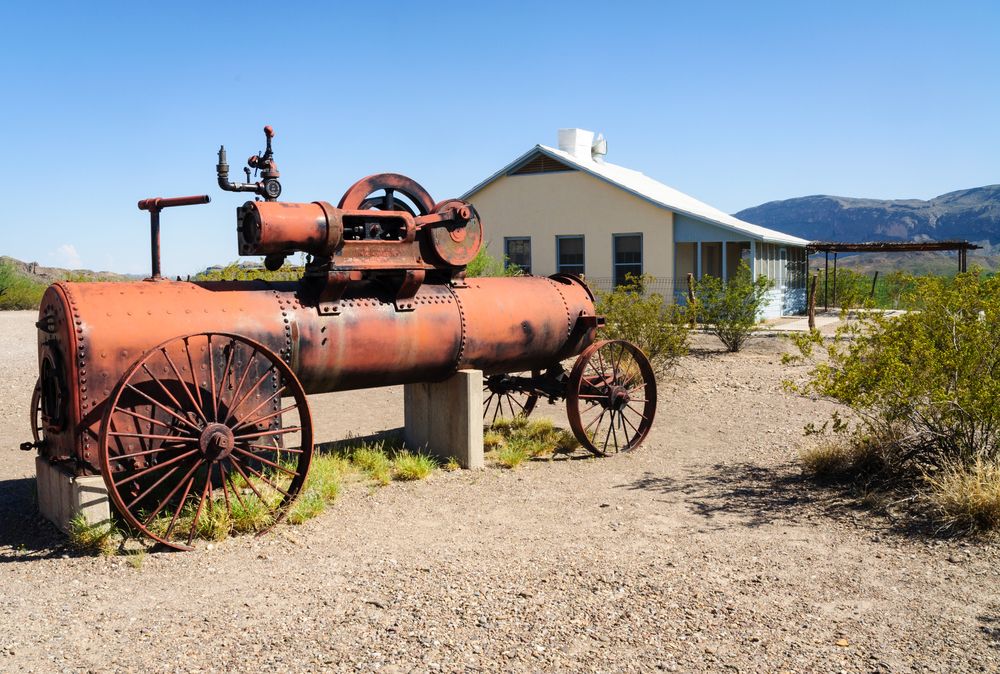The Castolon Historic District located in Big Bend National Park is on the National Register of Historic Places. It is a former farming community and US cavalry outpost that is now visited by tourists driving along Ross Maxwell Scenic Drive on the way to Santa Elena Canyon.

The Alvino House in Castalon is the oldest known adobe structure in the park. It is named for Alvino Ybarra who lived there from 1918 to 1957, but it dates back to 1901 when Cipriano Hernandez operated a store out of it (also his home). This was the original Castolon store (which would later become La Harmonia Company).
In 1916 (during the Mexican revolution) the US military stationed troops at Camp Santa Helena in Castolon. They started constructing a permanent post there in 1919 including a barracks, and quarters for the officers and NCOs. The area was abandoned by the military in 1920 when the Mexican revolution ended.

The La Harmonia Company Store moved to Old Castolon (across from present day Cottonwood Campground) in 1918 and then into the barracks in 1921. The National Park Service acquired the store from La Harmonia in 1961. The store is now run by park concessioner Forever Resorts as part of the Castolon Visitor Center.

The Castolon Ranger Station now operates from the old officer’s quarters that were constructed as part of Camp Santa Helena.
The area also includes the ruins of many other homes in the area as well as two cemeteries. Cottonwood Campground is located adjacent to Old Castolon.

Above is a photo of a steam powered boiler engine on wheels in Castolon. It was made by the Brownell Company of Dayton Ohio and is part of the farming machinery from La Harmonia’s cotton farming. Cotton was grown here between 1922 and 1941 by Wayne Cartledge.
